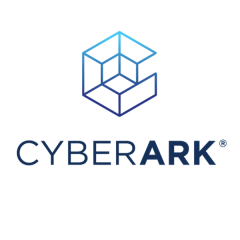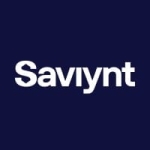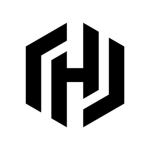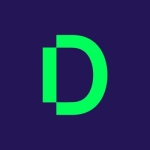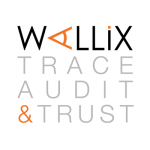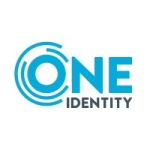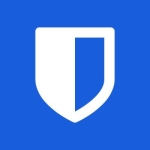What is our primary use case?
The primary use case is increasing security and our security posture at our company, helping to prevent any future breaches and secure as many privileged accounts as we can. We have a lot of use cases, so there is not really a primary one, other than just trying to increase our security and protect our most privileged accounts.
We do not have a large cloud presence as of yet, but like other organizations, we are starting to get into it. We have a fantastic adoption of CyberArk that extends all the way up through executive leadership. A lot of times, projects and proof of concepts that we want to go through are very well-received and well supported, even by our top leadership. Once we get to the point where we are ready to do that, I think we will have executive support, which is always incredibly important for these types of things.
We are in healthcare, so we are a little bit behind everybody else in terms of adoption and going into these types of areas. We are a little bit behind others in terms of cloud, but we will definitely get there.
How has it helped my organization?
Right out of the gate, three years ago, we secured all of our Windows Servers and all of our local administrator accounts. We followed that with all of their root accounts for our Unix servers. We were able to greatly increase our posture with local accounts. Then, we went through domain admins and reduced the landscape and password age of those accounts. We have demoted a lot of domain admins and taken a lot of that away from people, giving it a shared account structure. This has worked well for us to be able to protect our most sensitive assets. We call them crown jewels. It has been important to be able to do that, and CyberArk has allowed us to do that, which has been great.
We have tightly integrated CyberArk into a lot of our different processes. Our security organization is massive. We have a lot of different teams and different things moving. Not only have we integrated this into our identity access management team, so onboarding and offboarding, but we also have integrated it in our threat management side where they do security configuration reviews before we have applications go live. We require these accounts that operate those particular solutions to be vaulted immediately. We have implemented them into a lot of our policies, standards, and processes. It has helped us with our adoption with other teams, and it has also helped us to integrate it at the ground level.
What is most valuable?
It has an automatic password rotation. We have so many accounts, and being such a large organization, it helps take a lot of maintenance off of our plates, as well as automating a lot of those features to help increase our security. Having this automation in place, it has really been beneficial for us.
We do use their AIM solution for application credentials.
What needs improvement?
One of the things that I have been wanting is that we use the Privileged Threat Analytics (PTA) solution, and it is a complete standalone solution, but they will be integrating it into the vault and into the PVWA. So, we will have that singular place to see everything, which for us is great because it's one less thing to log into and one less thing that you feel like you have to jump over to get a piece of information. Having a centralized place to manage the solution has been something that I have always wanted, and they are starting to understand that and bring things back together.
For how long have I used the solution?
What do I think about the stability of the solution?
It is phenomenal. We have three data centers across the United States. This was last year or the year before, we had one of our data centers altogether go out, and a very large amount of our critical applications went down. CyberArk stayed up the entire time. We had redundancy in another data center and we had disaster recovery plans already set up and ready to go. In that time, when everything was so hectic and everybody was scrambling, trying to get the data center back up and available, they were able to access the privileged credentials that they needed because our solution remained up and available.
This was a huge for us. To have the users of the system feel that it is stable, trustworthy, and dependable. We have had great success with the disaster recovery functionality that we have with CyberArk vault. We test it frequently, and it is stable for us. We have been very pleased with the stability of the solution.
What do I think about the scalability of the solution?
So far, it has been fantastic. We are a very large organization. We have approximately 110,000 employees and almost 20,000 accounts vaulted, where there is a lot of room for us to continue to grow. Even at the scale that we are at now, it has never had any kind of issues. We have never had any issues with deploying additional things. We do have some room to grow in some of our components servers if we need those, but everything that we have stood up so far has been operating flawlessly. We have not had any issues with our scale. It has been great.
How are customer service and technical support?
We have contacted them less frequently as we have become more familiar with the solution. A lot of times now engaging technical support is more for sanity checks, and saying, “Are we doing this right or are we missing anything?” We have utilized them and have had pretty good success with having them help us with particular issues.
When we have called them, it has been something which has been a challenge for us. We generally get to the right person. Sometimes it takes us a bit of time and some further explanation to say, “This isn't exactly what we're asking." Then, we need to pull in somebody more technical or a next level of escalation.
The customer success team has been monumental in helping us get the right people involved. If we log a support ticket, for example, and we are at a point in our maturity and our understanding of the solution that Tier 1 support is usually not what we need. We have done a lot of our own checks and troubleshooting, and we are able to say, "Here is all the stuff that we've done. We need the next level of support."
The customer success team has been monumental in pulling in the right people and helping us get to the right people on that side rather than working with the support person and saying, “We pulled this person in.” Sometimes, it is pulling in the solution manager or the team lead for that solution and getting to the top of that team almost immediately. We have had great feedback. The customer success team has been at the center of helping us get to that point.
Which solution did I use previously and why did I switch?
We did not use another solution before CyberArk.
The big thing that was a catalyst for us to look at CyberArk was the Anthem breach that happened back in 2014 or 2015. Being a healthcare organization, our executive leadership realized that we are a big company. We are not immune to these sorts of attacks either. We have got to get something in place. Being best of breed, we turned to CyberArk for that. Again, it has been a fantastic partnership, and has both ways; we've been able to help them. They have been able to help us quite a bit as well.
How was the initial setup?
The initial setup was straightforward. We did have an implementation engineer from CyberArk who walked through it with us. He guided us through the process. Even though the documentation is straightforward, there is a lot there to do with a lot of different components which make it up. In and of itself, there are a lot of moving parts, but having that implementation engineer onsite, helping us walk through it helped us be very successful quickly. We also had the same experience when we went through upgrades where we contracted with professional services to help us. They have always had someone out there who guided us through it, either onsite or remotely. We have had both instances and both have been very successful.
What about the implementation team?
I was the primary engineer and lead engineer who stood up the entire solution. I was both solution architect at that time, as well as the solution engineer. I have since moved into the architect role and have backfilled my position. However, I was there at the very beginning and did all of the initial setup.
What was our ROI?
The first year that we were standing up CyberArk, our organization did an annual pen testing. In one of our organizations, where we didn't have CyberArk deployed yet, they were able to escalate privileges and get all the way to a domain controller, and go all the way that an attacker would be able to. The next year that they did their annual pen testing, after we had deployed in that same region, they basically got stopped almost immediately, and they were never able to escalate their privileges. We stopped the pen test in their tracks because of the solution being in place.
While that may not have a dollar amount because it was just a test, it gives us a lot of peace of mind. Of course, we can't always say that it is impossible for somebody to get in. Someone is going to eventually get in, that is bound to happen. Knowing that we have the solution in place and reducing that threat landscape as much as we have, has been phenomenal for us, at least from an intrinsic value standpoint.
Which other solutions did I evaluate?
We did not evaluate other solutions. We automatically went with CyberArk.
What other advice do I have?
CyberArk is a fantastic solution. They understand what the industry is trending towards. They are able to meet that very quickly. Being in healthcare, we are a little bit behind the times and we follow people a little further behind (for example, the financial sector has been doing all this stuff for so long). However, healthcare, as an industry, is always a few steps behind because we are clinical and have to support a lot of different clinicians, physicians, and regulations, which sometimes makes us move more slowly. Just having this has been huge for us.
One of the things which has differentiated us from other customers from CyberArk is we have been tremendously successful in rolling out different implementations. There are a lot of clients whom I have talked to personally who have bought the solution, but have never implemented it, or they have been met with a lot of struggles or a lot of uphill battles with their staff and adoption. My best advice would be to start out and find the quick wins, the low-hanging fruit; these things you can provide to your organization to have them understand and see the same value that you are seeing as you are implementing.
I am familiar with the the new plugin generator utility. I have not used it because I think it is a newer version than what we have, but I am excited about it. I am looking forward to utilizing it. It is similar to what they have for their PSM solution. They have some new web services framework, so they do not have to use the AutoIt tool because it takes a long time to create plugins today. Like the plugin creation utility, it will allow us to take a whole lot of time off of our turnaround to be able to provide some of these connection components.
Most important criteria when selecting a vendor: Because we have so many applications and solutions across our organization, interoperability is a big thing. I am in charge of CyberArk, as well as Duo, who we use for our two-factor, and having that integration point or the ability to integrate with these solutions is huge for us. As we try to standardize across all of our different organizations, which is very difficult in our industry, what we offer for a particular solution rather than having 30 different iterations of different applications, has been huge for us. Standardization and integration is a huge point for choosing a vendor.
Disclosure: PeerSpot contacted the reviewer to collect the review and to validate authenticity. The reviewer was referred by the vendor, but the review is not subject to editing or approval by the vendor.

